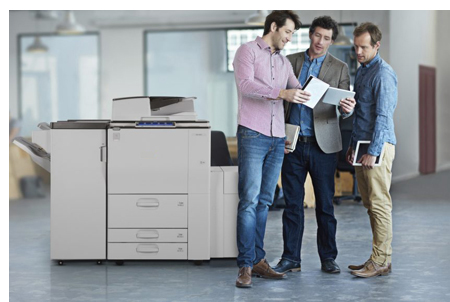Are Copiers Dangerous?
 Copiers or MFPs (multifunction printers) exist in almost every business setting. Most companies could not function without one. They are the office workhorse.
Copiers or MFPs (multifunction printers) exist in almost every business setting. Most companies could not function without one. They are the office workhorse.
Could a device that is in constant use, and is easily accessible to everyone, be a health hazard? Without proper maintenance, placement consideration, and a bit of common sense, then yes, it could be. However, preventing that from becoming the case could not be simpler. So what hazards might the office copier pose to you and your coworkers?
Ozone
Ozone is a colorless gas with a distinctive odor created by photocopiers to get ink cling to paper. Although it is a natural occurrence in the atmosphere (your local weatherman may have used the term “ozone action day”), it can be harmful if inhaled in more significant amounts. For all adequately maintained copiers, that’s not usually a problem. Malfunctioning copiers, however, can pump out elevated levels of ozone which could lead to headaches, eye and breathing problems, and even respiratory conditions for people with asthma or who are more sensitive to irritants. Many of today’s enterprise-level devices include an ozone filter.
Toner dust
The toner in copiers is technically a carcinogen. Just like ozone, toner dust can produce respiratory problems, coughing and sneezing in sufficient quantities. Most often, the fine-particle toner dust is introduced into the air by toner spillage, especially during the replacement of toner cartridges. But malfunctioning devices could also be leaking toner inside the copier cabinet. Since photocopiers usually produce high heat, they also employ ventilation systems and fans, which can pick up that dust and exhaust it into the air.
Other hazards
Selenium is a photoconductive coating on the copier’s drum. When the device routinely overheats or is just plain old, it can cause the selenium to deteriorate. The dust gets pumped into the surrounding air, much like toner dust. Overexposure to selenium dust can lead to unexplained fatigue, concentration issues, and respiratory and eye irritation.
Although rare, poorly maintained or malfunctioning copiers may produce carbon monoxide gas. It would be an unusual (but not unheard of) event to reach very harmful levels.

Quick fixes
As we mentioned earlier, the steps to prevent these issues are straightforward:
1) Routine device maintenance is the most critical thing you can do for the office copier and your coworkers. Often, the technology provider you purchased or leased the device from can supply you with a service contract or service as needed.
2) Try to find an open, easily accessible place to set up your copier. Look for a location with excellent and constant air circulation; if this place is also a decent distance from employee desks or where people congregate (the break room, coffee machine, or conference room), then even better.
3) If you change the toner supply yourself, ensure you know what you are doing beforehand. Read the directions so that you can accomplish the task quickly and safely. If any amount of toner spills, keep people away from the area until completing cleanup.
Return to the Tech Trends Newsletter

